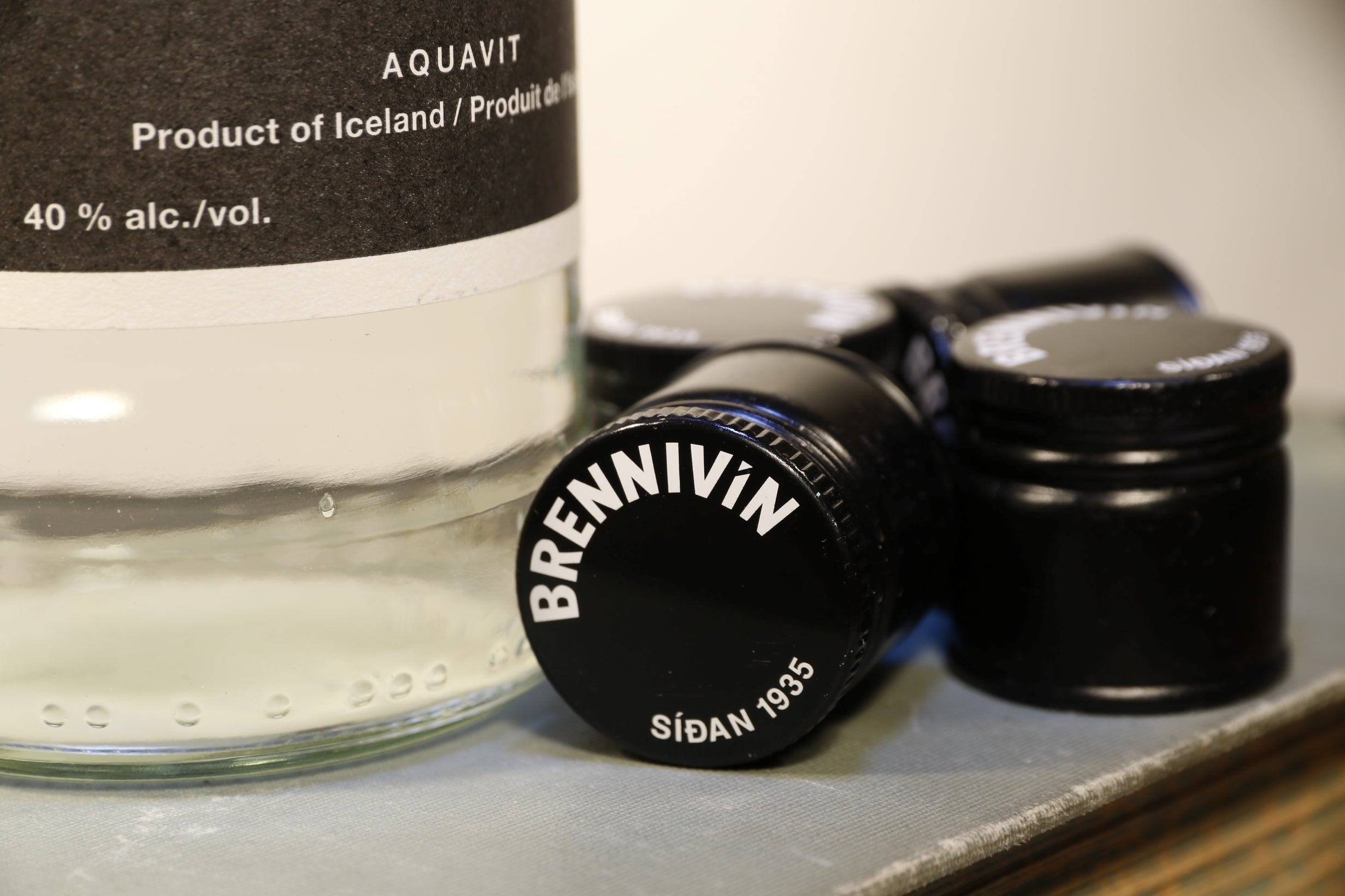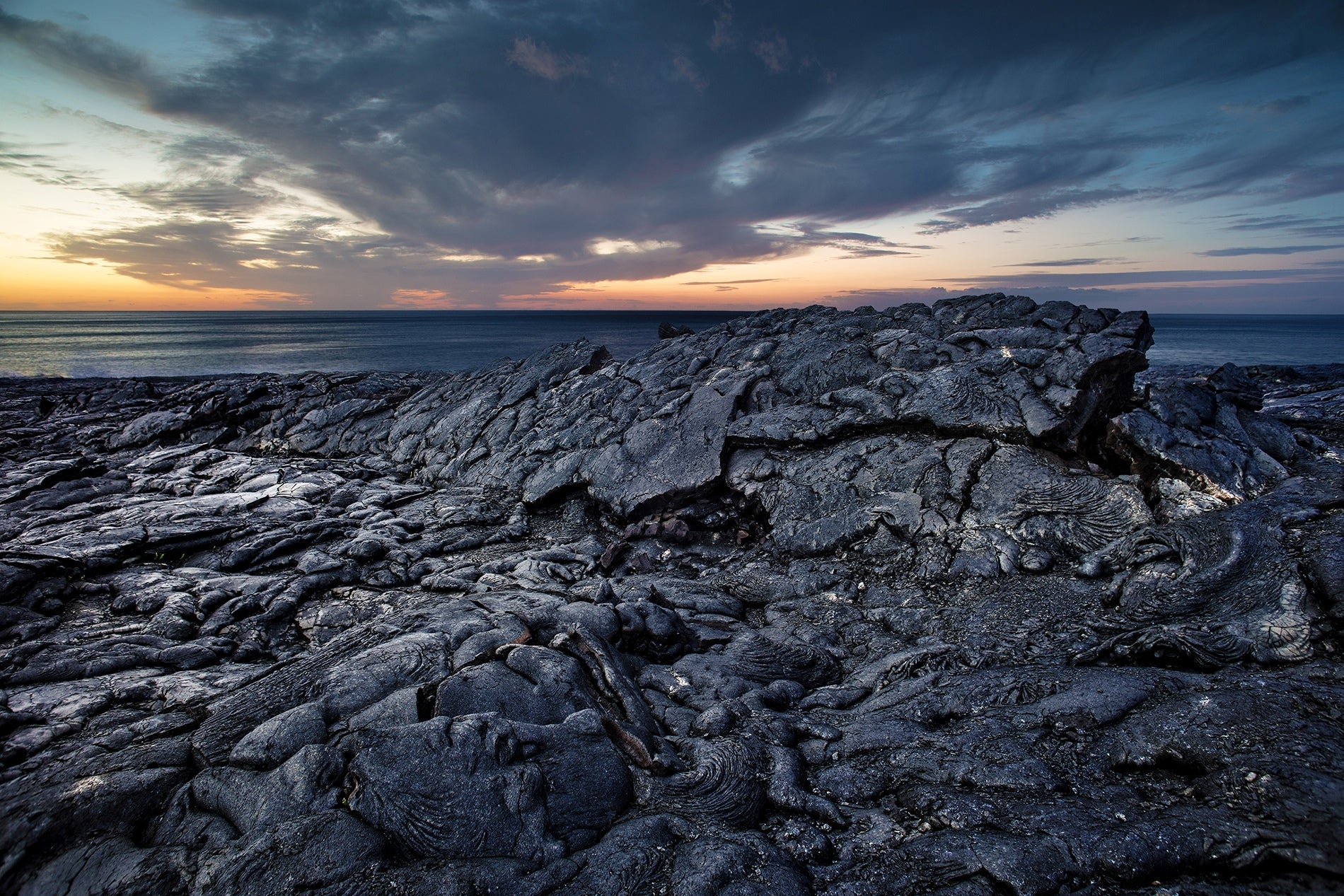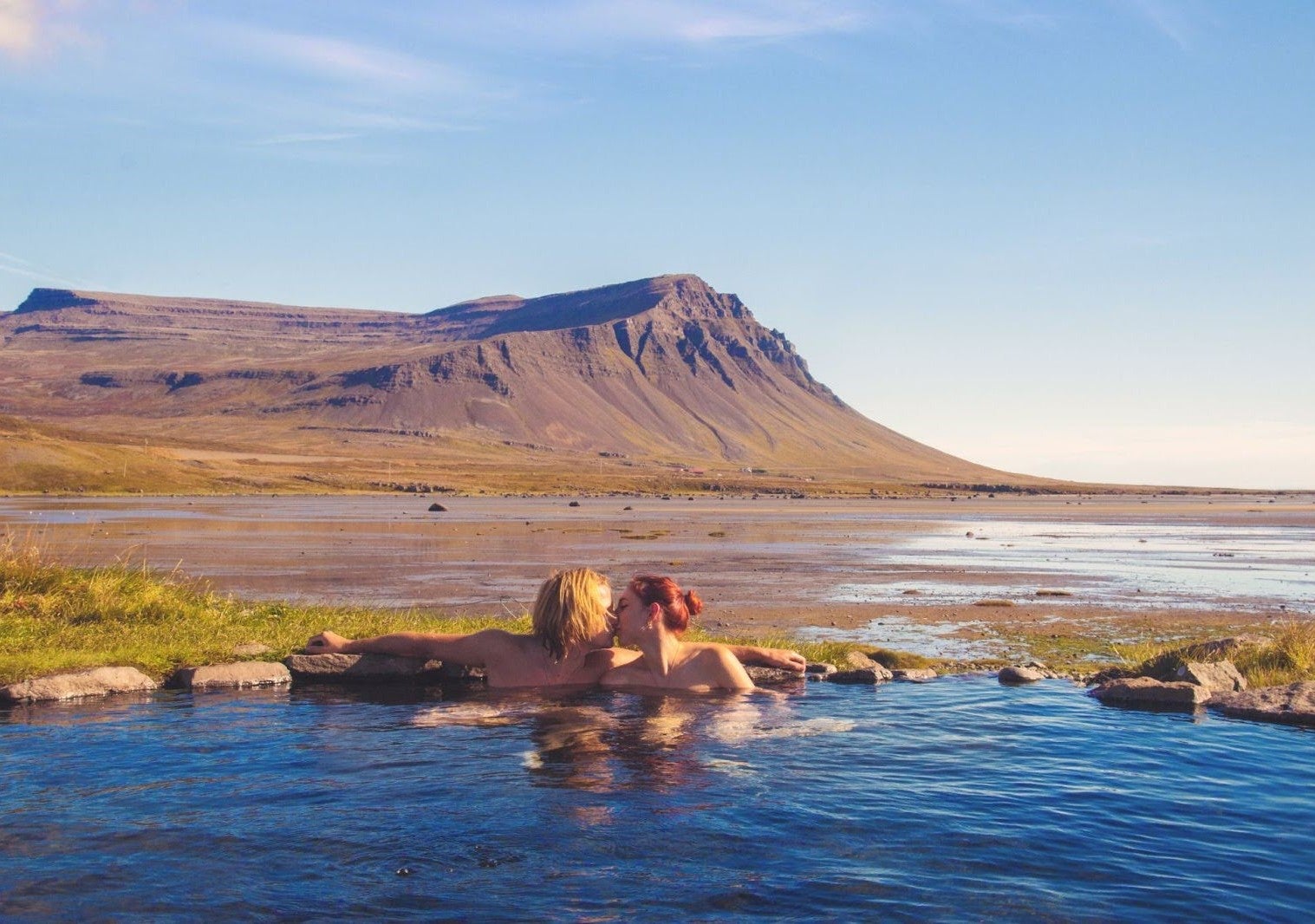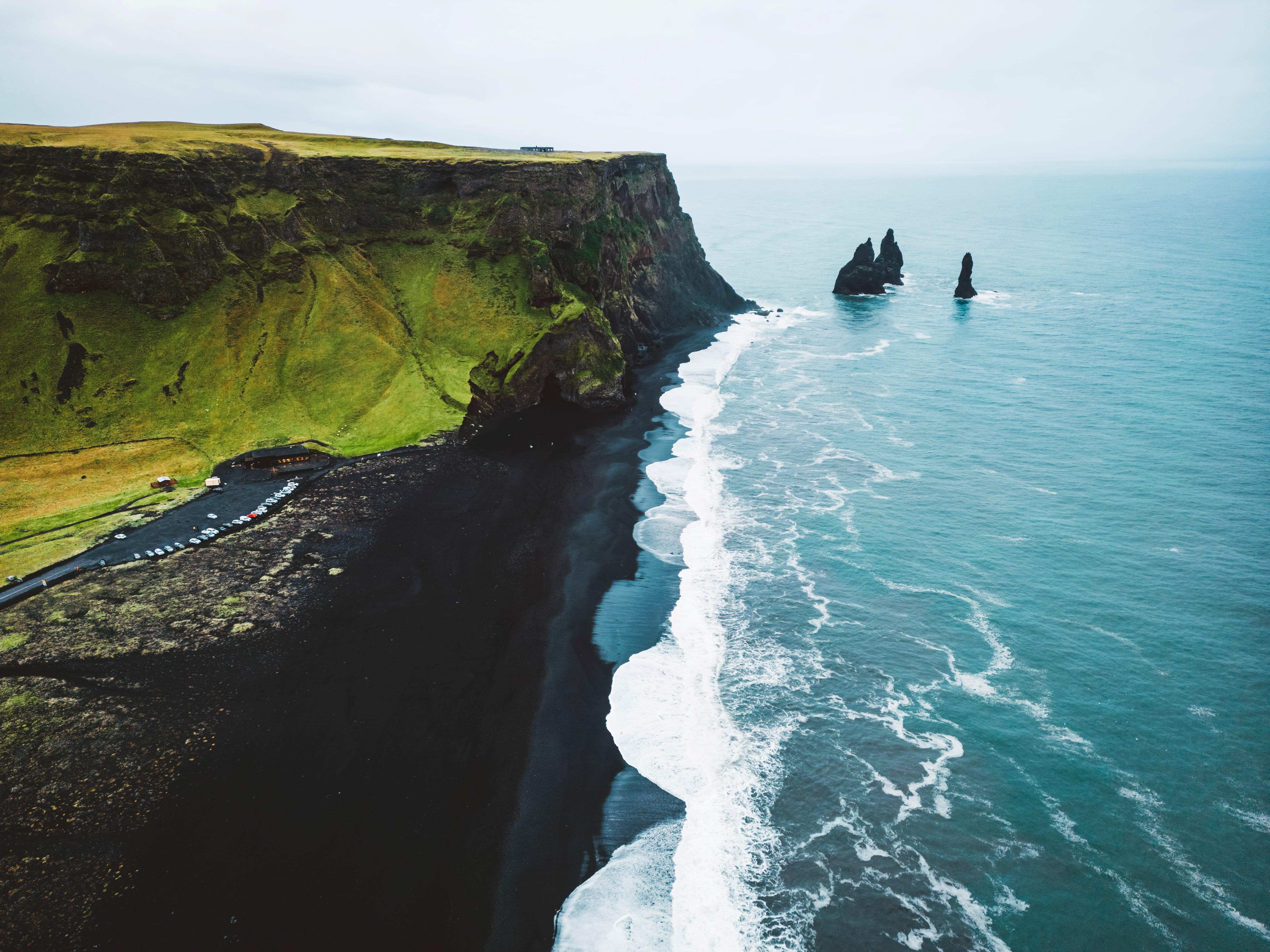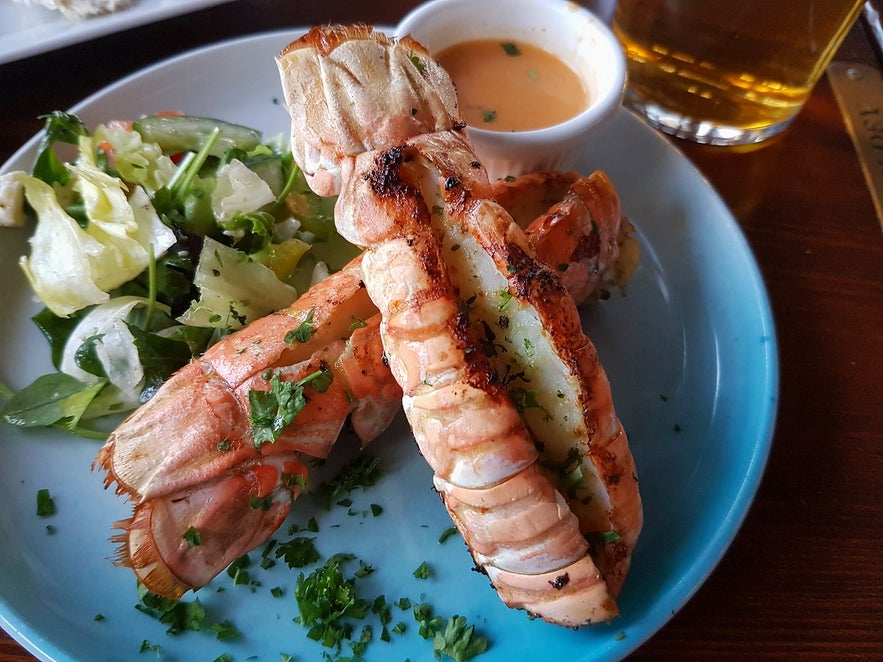
The unique Icelandic cuisine is just one reason to visit Iceland. But you can also re-create some of the best meals from your trip once you’re back home. The best Icelandic recipes include hearty meat dishes, traditional breads, and of course, plenty of seafood.
True travelers never leave without trying the local cuisine, and Iceland has become a must-visit destination for food lovers. You can take food or drink tours in Iceland, enjoy meals at popular restaurants, or discover authentic local delicacies at family-run eateries.
Why You Can Trust Our Content
Guide to Iceland is the most trusted travel platform in Iceland, helping millions of visitors each year. All our content is written and reviewed by local experts who are deeply familiar with Iceland. You can count on us for accurate, up-to-date, and trustworthy travel advice.
To make the most of your trip, explore a wide variety of vacation packages in Iceland, many of which combine culinary experiences with guided tours and chances to discover the country’s stunning landscapes.
While some restaurants serve modern takes on the Icelandic cuisine’s Scandinavian legacy, Iceland is also keeping tradition alive. Many recipes that fed Icelanders centuries ago are still commonly used today. Read on to learn how you can make these dishes yourself and bring a little Iceland back to your own kitchen.
Photo above from Wikimedia, Creative Commons, by Benreis. No edits made.
Key Takeaways
-
Get Out There and Try Things: Guided food tours offer iconic Icelandic dishes with a side of cultural education.
-
Look to the Sea: Many of Iceland’s most well-known recipes feature freshly caught fish and other seafood.
-
Preparation Is Key: Preparation and preservation methods that are unique to the landscape (like bread baked by geothermal heat) set Iceland’s cuisine apart from that of other Nordic countries.
- Learn about food in Iceland with The Ultimate Guide to Iceland Food Culture.
- Familiarize yourself with Icelandic culture by reading about The History of Iceland.
Where To Eat Famous Food in Iceland
 Food- and drink-focused day tours combine sightseeing and thrilling cultural experiences with sampling Icelandic cooking. Whether your tastes lie in the freshest seafood you’ll ever eat or bread literally baked by the heat of the earth, there’s a tasty and entertaining option for you.
Food- and drink-focused day tours combine sightseeing and thrilling cultural experiences with sampling Icelandic cooking. Whether your tastes lie in the freshest seafood you’ll ever eat or bread literally baked by the heat of the earth, there’s a tasty and entertaining option for you.
-
2-Hour Seafood Boat Tour: On this boat tour of Breidafjordur Bay, leaving from Stykkisholmur, you’ll watch crew members pull nets of fresh seafood from the depths—some of which you’ll be able to eat right there on the ship.
-
3.5-Hour Reykjavik Walking Food Tour: Join a local guide for this walking tour of six notable culinary stops in the city of Reykjavik and learn about the Icelandic cuisine of yesterday and today while you sample different dishes.
-
1-Hour Eimverk Distillery Tour With Spirit Tasting: You’ll find Iceland’s only whiskey distillery in the town of Gardabaer, not far from Reykjavik. This tour of the facility includes samples of whiskey, gin, and brennivin.
-
Geothermal Rye Bread Tasting: If you’ll be in Laugarvatn in South Iceland to visit Fontana Spa, consider adding on this tasting of traditional rye bread baked by the geothermal heat of the region. Of course, this excursion also includes plenty of local butter.
-
3-Hour Reykjavik Christmas Food Tour: If you visit Iceland in December, take in the festive (and delicious) charm of Reykjavik during the holidays. This guided walking tour focuses on bites and drinks typically shared to celebrate Christmas.
Traditional Icelandic Recipes To Make at Home
Icelandic food is heavily influenced by the countryside. With most civilizations sprouting up around the coast, fish and seafood are prominent in main dishes. Meat and game are also popular, however.
Many traditional recipes rely on hearty vegetables, like potatoes, and dairy products. Here are some of the authentic Icelandic dishes and how to make them.
Fish and Seafood Dishes
Iceland has always been a nation of fishermen, so the country's most diverse dishes undoubtedly include seafood.
Icelandic Fish Balls (Fiskibollur)
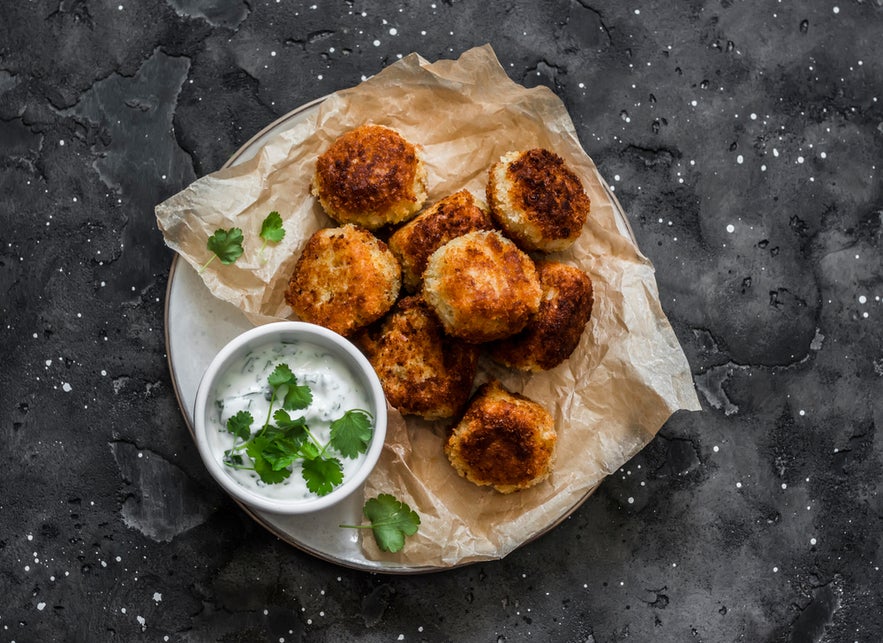 A traditional Icelandic home-style dish.
A traditional Icelandic home-style dish.
Ingredients:
-
2 pounds (907 grams) fresh cod fillets
-
1 cup (240 milliliters) half and half
-
1 medium red onion, chopped
-
2 large eggs
-
3 tablespoons (24 grams) potato starch
-
2 tablespoons (30 milliliters) Worcestershire sauce
-
1 pinch salt and pepper, to taste
-
1 tablespoon (14 grams) butter, or more to taste
-
1 cup (240 milliliters) water, or as needed
-
1 splash dry white wine (about 1–2 tablespoons / 15–30 milliliters)
Directions:
Break cod into pieces and place in a food processor with half and half, onion, eggs, potato starch, Worcestershire sauce, salt, and pepper; process until evenly blended. Transfer to a bowl, cover, and refrigerate for at least four hours.
Remove from the refrigerator and shape into balls (think crabcake-size but thicker).
Melt butter in a skillet over medium heat. Add fish balls and sauté on all sides until golden brown, 8 to 10 minutes. Add ½ inch (1.27 cm) of water to the skillet with wine. Cover, bring to a simmer, and cook until cooked through, about 10 more minutes.
This recipe is by Fabwick from AllRecipes.
Icelandic Fish and Chips
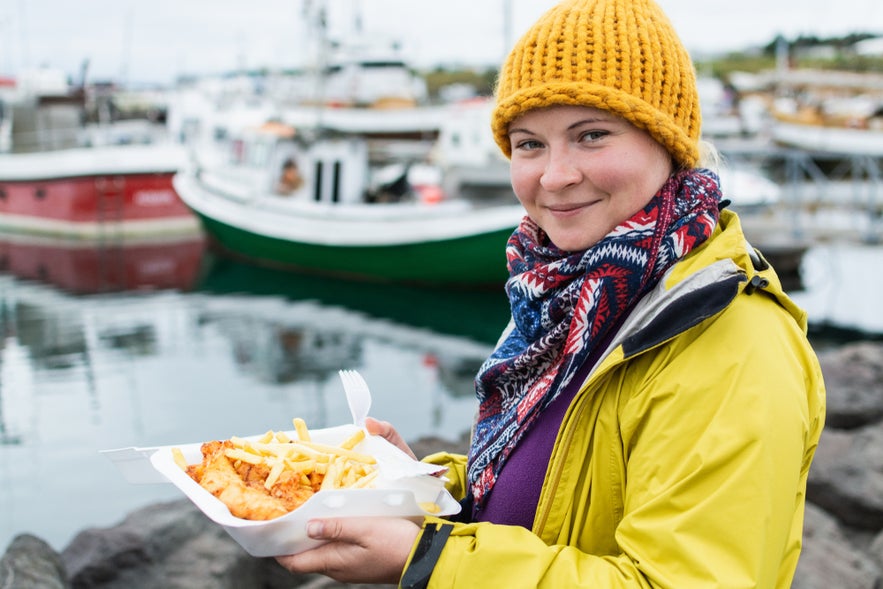 In Iceland, cod and hake are commonly used to whip up crispy, flavorful fried fish planks.
In Iceland, cod and hake are commonly used to whip up crispy, flavorful fried fish planks.
Ingredients:
For fish:
-
7 ounces (198.5 grams) cod loins
-
Salt, to taste
-
Lemon zest, to taste
For spice blend:
-
1 cup (120 grams) flour
-
1 teaspoon (2.5 grams) smoked paprika
-
½ teaspoon (1 gram) onion powder
For batter:
-
2 cups (480 milliliters) of beer, plus a little more if needed
-
¼ cup (60 milliliters) vodka
-
3¼ cups (390 grams) flour
-
3 teaspoons (18 grams) salt
-
3 teaspoons (15 grams) baking soda
-
Frying oil, for deep-frying
For tartar sauce:
-
1 cup (240 milliliters) mayonnaise
-
¼ cup (40 grams) pickles, finely chopped
-
1 tablespoon (15 grams) finely chopped shallots
-
Juice of ½ lemon (about 1 tablespoon / 15 milliliters)
-
2 tablespoons (4 grams) finely chopped dill
-
Sea salt and pepper, to taste
Directions:
Slice fish into evenly sized pieces. Sprinkle with salt and lemon zest. Refrigerate for 15 minutes. Rinse in cold water and wipe dry.
Mix 3 ½ cups (420 grams) flour, salt, baking soda, and vodka in a bowl. Slowly add the beer while stirring.
For tartar sauce, add pickles and shallots to mayonnaise and stir. Add dill and lemon juice. Salt and pepper to taste.
For spice blend, mix the remaining flour with smoked paprika and onion powder.
Cover fish with the spice blend. Dip into the batter. Deep fry in oil at 350°F (177°C) for 4–5 min. Turn regularly for even cooking.
This recipe is from Seafood From Iceland.
Icelandic Fish Stew (Plokkfiskur)
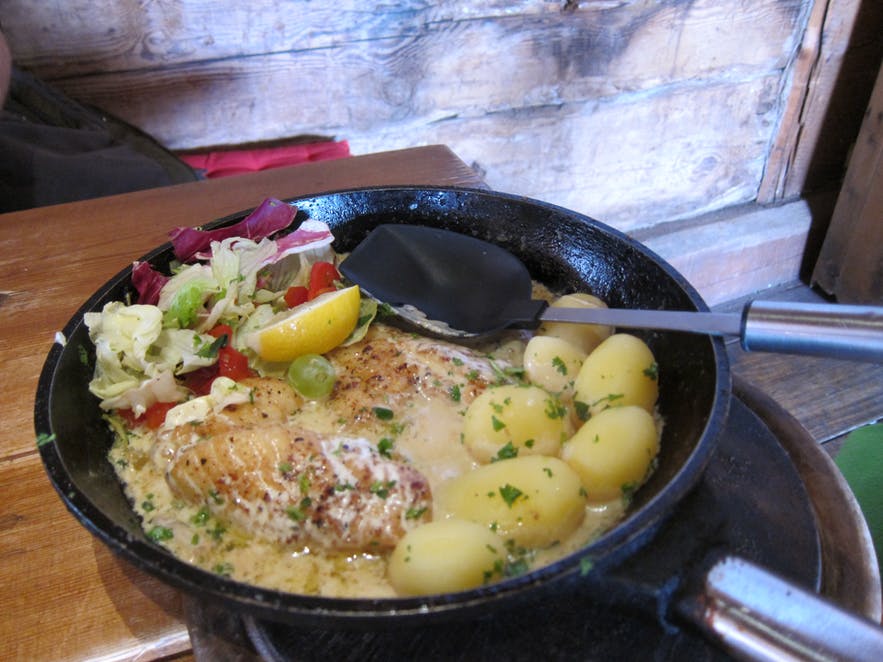
A simple, hearty dish made with fresh ingredients.
Ingredients:
-
1¼ pounds (567 grams) cooked haddock or cod
-
1¼ pounds (567 grams) potatoes, boiled and peeled
-
1 white onion
-
1½ cups (360 milliliters) milk
-
¼ cup (57 grams) butter
-
3 tablespoons (24 grams) flour
-
Salt and pepper
-
2 tablespoons (6 grams) fresh chives
Directions:
Skin, bone, and break the fish into flakes. Roughly chop potatoes and finely chop onion. Slowly heat milk in a saucepan almost to a boiling point.
While the milk is heating, in a medium or large-sized nonstick saucepan, melt butter and sauté onion over medium heat until soft. Do not allow it to brown.
Sprinkle flour over onion, stir well, and cook for 1–2 minutes. Gradually add warmed milk, stirring continuously. Simmer for 3–4 minutes, stirring often.
Add flaked fish and stir briskly to break up the fish flakes completely. Season liberally with salt and pepper. Add potatoes and stir gently. Cook over low heat until heated through.
Spoon into 4 bowls and sprinkle each serving with ½ tablespoon (1.5 grams) chives. Serve hot with dark rye bread and butter.
This recipe is by twissis from Food.com.
Icelandic Cod Fish Tacos
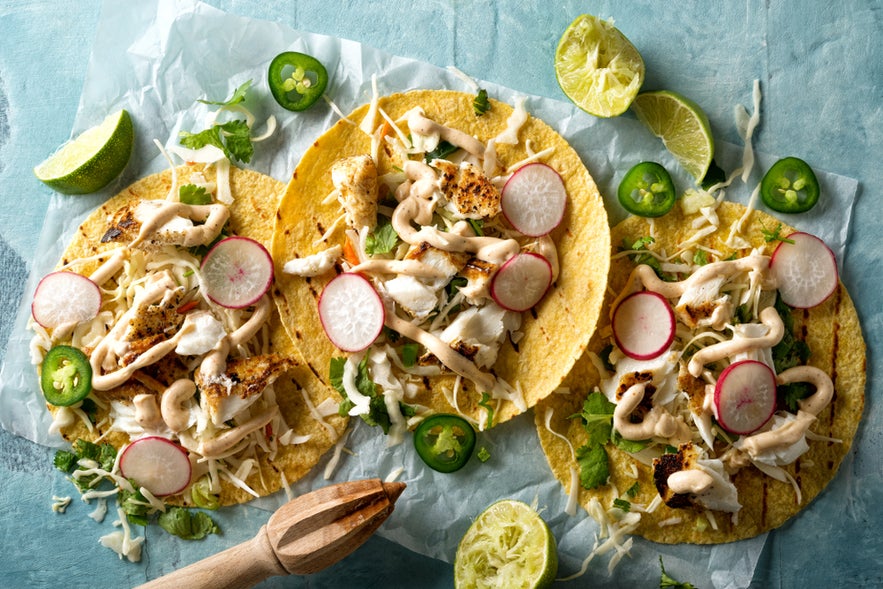 These fish tacos are even more delectable with homemade pico de gallo.
These fish tacos are even more delectable with homemade pico de gallo.
Ingredients:
-
4 cod fillets thawed
-
12 6-inch (15.24 cm) corn tortillas
-
3 cups (180 grams) lettuce, finely shredded
-
1½ cups (360 grams) pico de gallo
For pico de gallo:
-
1 cup (180 grams) Roma tomatoes, diced
-
¼ cup (40 grams) white onion, diced
-
2 tablespoons (4 grams) cilantro, chopped finely
-
2 teaspoons (4 grams) jalapeno, minced
-
1 tablespoon (15 milliliters) fresh lime juice
-
½ teaspoon (3 grams) sea salt
Directions:
Preheat the oven to 400°F (205°C). Cut each thawed cod portion into 3 even pieces.
Place cod on a baking sheet lined with foil or parchment paper and season as desired. Bake for 10–12 minutes.
Heat tortillas in the microwave for 5–10 seconds or in a medium pan on the stove for 10 seconds on each side.
Place ¼ cup (15 grams) of shredded lettuce in the center of each tortilla. Place a cod fillet on the lettuce and top each with two tablespoons (30 grams) of pico de gallo.
This recipe is from Omaha Steaks.
Creamy Icelandic Langoustine Soup (Humarsupa)
 A comforting seafood soup, perfect for a chilly day. Langoustine is particularly popular in Hofn.
A comforting seafood soup, perfect for a chilly day. Langoustine is particularly popular in Hofn.
Ingredients:
-
2 pounds (907 grams) shell-on whole langoustines
-
8 tablespoons (113 grams) unsalted butter
-
2 tablespoons (30 milliliters) olive oil
-
2 carrots, minced
-
2 stalks celery, minced
-
1 large yellow onion, minced
-
2 tablespoons (30 grams) tomato paste
-
2 teaspoons (4 grams) paprika
-
Kosher salt and freshly ground black pepper, to taste
-
12 cups (2.84 liters) fish stock
-
2 cloves garlic, minced
-
1 tablespoon (7 grams) mild curry powder
-
1½ cups (360 milliliters) heavy cream
-
1 cup (240 milliliters) dry white wine
-
2 tablespoons (6 grams) minced chives
Directions:
Remove heads and shells from langoustines and lightly crush; chill tail meat until ready to use. Heat 1 tablespoon (14 grams) butter and the oil in an 8-quart (7.6-liter) saucepan over medium-high. Cook shells, carrots, celery, and half the onion until vegetables are soft, 6–8 minutes. Stir in tomato paste, paprika, salt, and pepper; cook for 2 minutes. Add stock; simmer until reduced by half, about 2 hours. Strain stock.
Wipe pan clean and add 4 tablespoons (57 grams) butter; melt over medium. Cook remaining onion and the garlic until soft, 3–4 minutes. Stir in curry powder; cook for 1 minute. Add 1 cup (240 milliliters) cream and the wine; cook until reduced by half, about 20 minutes. Add reserved stock; boil. Reduce heat to medium-high; cook until slightly thickened, about 30 minutes. Keep soup warm.
Whip remaining ½ cup (120 milliliters) cream in a bowl into semi-stiff peaks. Melt remaining 3 tablespoons (42 grams) butter in a 12-inch (30.5 cm) skillet over medium-high. Season langoustine tails with salt and pepper; cook, flipping once, until cooked through, 3–5 minutes. Divide soup between bowls and top with langoustines; garnish with whipped cream and chives.
This recipe is from Saveur.
Icelandic Baked Fish
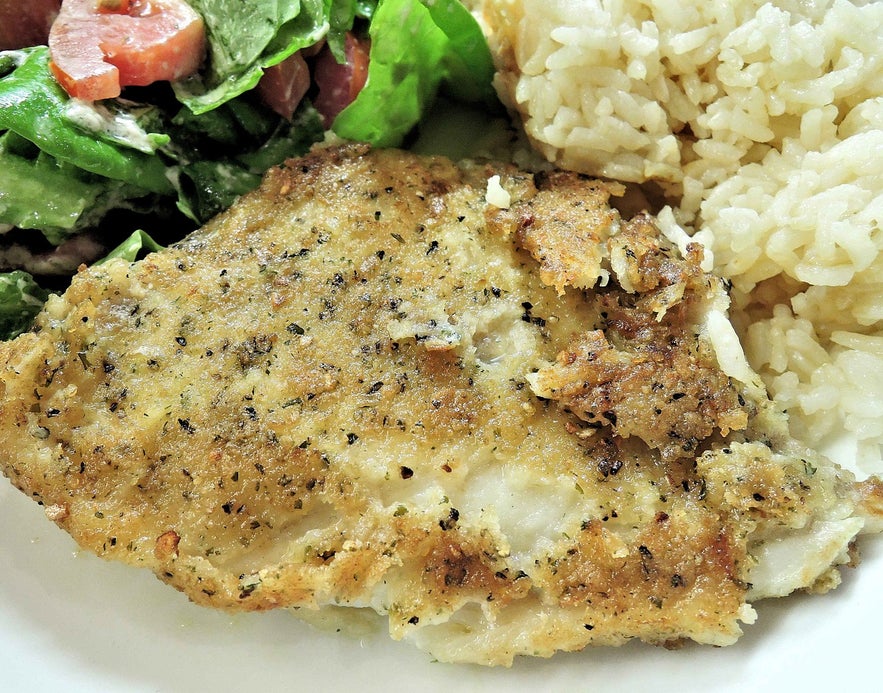
This simple fish dish can be served with your favorite starch.
Ingredients:
-
1 tablespoon (14 grams) butter
-
6 cod fillets
-
1 lemon
-
Salt and pepper, to taste
-
1½ cups (150 grams) Emmentaler cheese or Tilsit cheese, grated
-
1 tablespoon (15 grams) mustard
-
1 cup (240 milliliters) cream
-
½ cup (60 grams) breadcrumbs
Directions:
Preheat the oven to 350°F (177°C). Butter a baking dish. Put the fillets into the baking dish. Season the fillets with salt, pepper, and freshly squeezed lemon juice. Cover the fish with grated cheese.
Mix mustard with cream and pour it over fish fillets. Cover with breadcrumbs. Bake the fillets for 35 minutes.
Serve with rice, noodles, or mashed potatoes.
Meat Dishes
The more carnivorous can look to Iceland’s food culture for wholesome, meaty dishes. Lamb figures prominently in the country’s past and present cuisine, though you can also find recipes made from seabirds, beef, and even reindeer.
Hangikjot (Smoked Lamb) With Bechamel Potatoes
 This main dish is smoked, often with birch wood, and frequently served at Christmas in Iceland. However, finding hangikjot outside Iceland is difficult since Icelandic lamb is unique, but try any smoked lamb with this recipe.
This main dish is smoked, often with birch wood, and frequently served at Christmas in Iceland. However, finding hangikjot outside Iceland is difficult since Icelandic lamb is unique, but try any smoked lamb with this recipe.
Ingredients:
-
3⅓ pounds (1.6 kilograms) of deboned leg hangikjot
-
Water
-
⅓ cup (76 grams) butter
-
⅓ cup (40 grams) flour
-
3½ cups (830 milliliters) milk
-
Sugar
-
Salt and pepper
-
Nutmeg
-
1⅓ cups (225 grams) potatoes, boiled and peeled
Directions:
Place the deboned hangikjot in a pot with cold water and simmer slowly for approximately 30 minutes per pound (66 minutes per kilogram). Remove the pot from the stove and leave it to cool in the broth.
For bechamel potatoes, melt the butter in a pan and mix in the flour. Add the milk bit by bit and work together. Simmer for 20 minutes and stir regularly. Season with salt, pepper, nutmeg, and a pinch of sugar. Add the potatoes and leave to warm in the sauce before serving.
Slice and serve hangikjot with potatoes. You can also add pickled red cabbage, green peas, or Icelandic leaf bread as sides.
This recipe is from Icelandic Lamb.
Icelandic Lamb Soup (Kjotsupa)
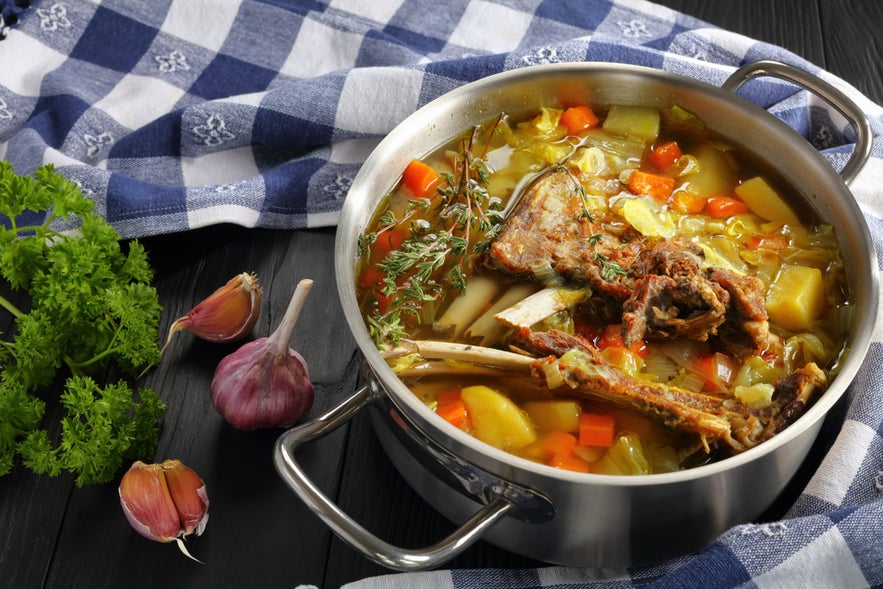 Tender lamb and hearty root vegetables combine in a flavorful broth for this comforting Nordic soup.
Tender lamb and hearty root vegetables combine in a flavorful broth for this comforting Nordic soup.
Ingredients:
-
2 tablespoons (30 milliliters) olive oil
-
1 teaspoon (3 grams) finely chopped garlic
-
3 pounds (1.4 kilograms) bone-in lamb shoulder or thick chops
-
1 medium onion, sliced
-
⅓ cup (65 grams) brown rice or rolled oats
-
6 cups (1.42 liters) water
-
½ teaspoon (0.5 grams) dried thyme
-
½ teaspoon (0.5 grams) dried oregano
-
½ head cabbage, coarsely chopped
-
3 medium carrots, ½-inch (1.25 cm) dice
-
½ cup (75 grams) diced rutabaga
-
1 cup (100 grams) cauliflower florets, optional
-
4 medium potatoes, ½-inch (1.25 cm) dice
-
Salt, to taste
-
Freshly ground black pepper, to taste
Directions:
In a large pot or Dutch oven, heat the olive oil over medium heat and briefly sauté the garlic for 1 to 2 minutes. (Do not brown.) Add the lamb pieces and brown on all sides.
Add the sliced onion to the pot and saute for about 1 minute, then pour in the brown rice and water. Raise the heat to high, bringing the soup to a low boil; allow to boil for 5 minutes, skimming away the froth as it rises.
Reduce the heat to medium, stir in the dried thyme and oregano, cover the pot, and cook for 40 minutes.
Add the cabbage, carrots, rutabaga, cauliflower (if using), and diced potatoes. Cook, covered, for an additional 20 minutes, or until the vegetables are fork-tender.
Remove the meat and bones from the pot, chop the meat coarsely, and return to the soup. Warm for an additional 5 minutes. Season with salt and pepper, serve, and enjoy.
This recipe is by Kari Diehl from The Spruce Eats.
Icelandic Hot Dog
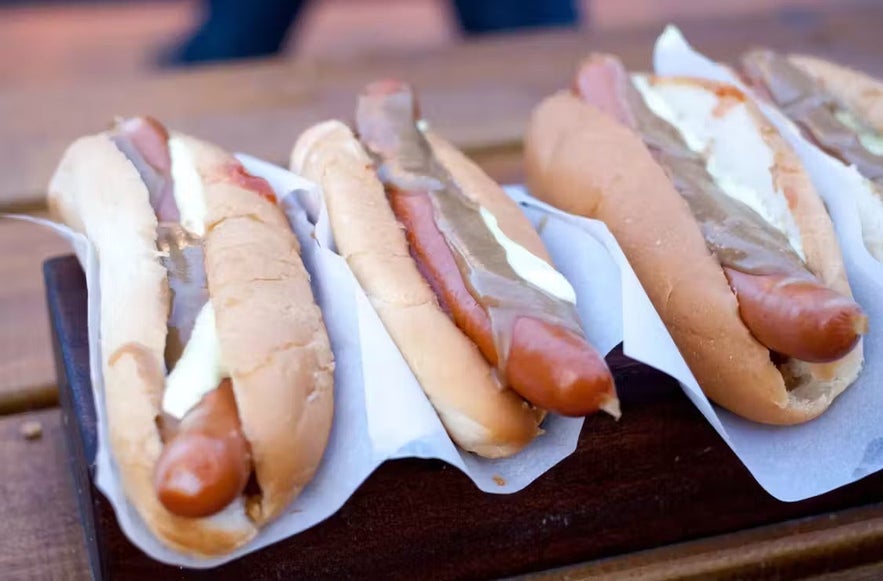
Ingredients:
-
6 long, white, fluffy hot dog buns
-
6 pylsur sausages
-
4 tablespoons (60 milliliters) Icelandic hot dog mustard
-
4 tablespoons (60 milliliters) ketchup
-
4 tablespoons (60 milliliters) Icelandic remoulade (recipe below)
-
6 tablespoons (36 grams) crispy deep-fried onion slivers
-
6 tablespoons (60 grams) diced shallots
-
1½ cups (360 milliliters) water mixed with 1½ cups (360 milliliters) of beer (Icelandic Viking and Gull are classic Icelandic beers, but any lager will do)
For remoulade:
-
¾ cup (180 milliliters) neutral-tasting oil
-
1 egg yolk
-
1 teaspoon (5 grams) Dijon mustard
-
1 tablespoon (15 milliliters) white wine vinegar
-
2 teaspoons (10 grams) chopped gherkins
-
2 teaspoons (10 grams) chopped capers
-
1 tablespoon (3 grams) chopped chervil
Directions:
Braise the pylsur in the beer water just until they are hot.
Split the buns down the middle and lightly toast them. Add one sausage and the raw onions to each bun. Add a stripe of mustard, remoulade, and ketchup down each sausage. Top with the crispy fried onions.
This recipe is from The Food Dictator.
Side Dishes and Breads
Now that you have your entree planned, consider what you’ll serve alongside it. Icelanders have perfected preparing potatoes and baking bread over the years.
Icelandic Caramelized Potatoes
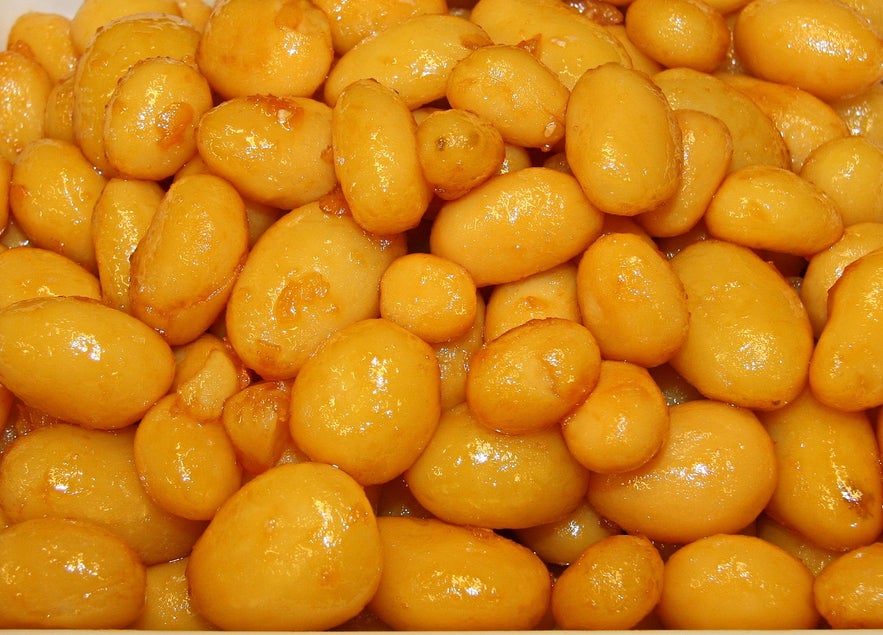
Three ingredients are all that’s required to make this favorite side dish for special occasions.
Ingredients:
-
3 medium potatoes
-
5 tablespoons (63 grams) sugar
-
3 tablespoons (42 grams) butter
Directions:
Wash and scrub the potatoes, removing any dirt, eyes, etc. Cut each in half, then cut each half into chunks.
Bring a quart (950 milliliters) of water to a boil, lower the heat to medium, and place the potatoes in the pot. Cover and cook for 20–25 minutes or until tender (able to poke a fork in it) but not mushy like you're making mashed potatoes.
Drain all the water off the potatoes, let them sit in the colander for about 5 minutes to dry out.
Place the sugar in a frying pan and heat it up until it begins to melt. Stir in the butter when this happens.
When the mixture reaches a rich golden color, remove from the heat and carefully toss potato pieces until they’re fully coated.
Leaf Bread (Laufabraud)
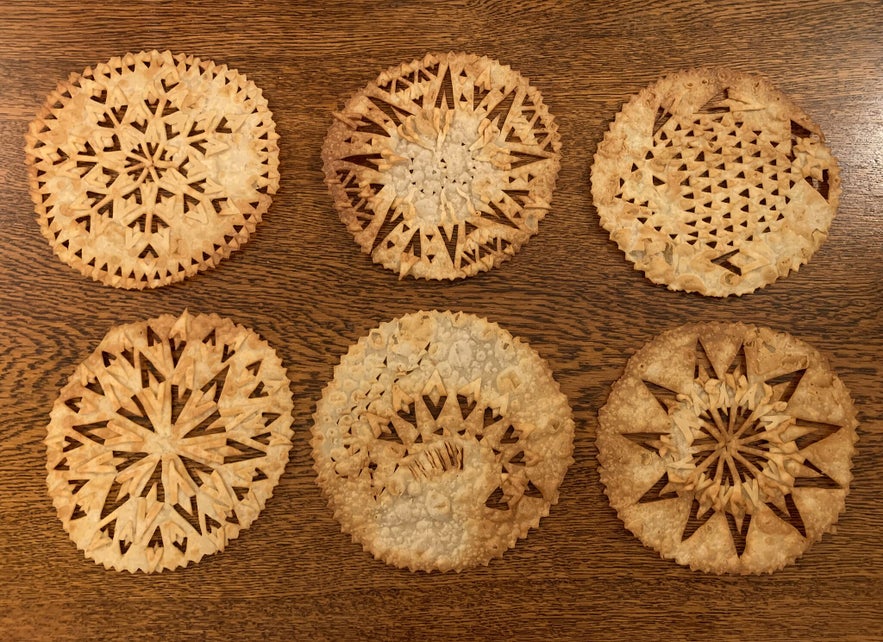
Photo from Wikimedia, Creative Commons, by Surya Mjoll. No edits made.
Iceland’s traditional Christmas bread is ultra-thin and very crispy.
Ingredients:
-
3½ cups (420 grams) flour
-
1 tablespoon (12.5 grams) sugar
-
1 teaspoon (4 grams) baking powder
-
1 teaspoon (5 grams) kosher salt
-
3½ tablespoons (50 grams) unsalted butter
-
1 cup plus 2 tablespoons (270 milliliters) whole milk, heated to 115°F (46°C)
-
Canola oil, for frying
Directions:
Whisk flour, sugar, baking powder, and salt in a bowl. Using two forks or your fingers, cut butter into flour mixture, forming pea-size crumbles. Stir in milk until dough forms. Transfer dough to a lightly floured surface; knead until smooth.
Divide dough into 25 1-ounce (28-gram) balls; working with one ball at a time, roll dough into a 7-inch (17.8-centimeter) disk, about 1/16-inch (1.6-millimeter) thick. (Cover remaining dough with a damp towel to prevent dough from drying out.)
Using a paring knife and working outwards from the center of disk, cut rows of nested V’s ¼-inch (6-millimeter) apart. Use knife to lift the tip of every other V; fold each tip back to cross over the V behind it, pressing the dough to adhere. Store cut dough disks between parchment paper and cover with a damp towel until ready to fry.
Heat 2 inches (5 centimeters) of oil in a 6-quart (5.7-liter) saucepan until a deep-fry thermometer reads 400°F (205°C). Fry one dough disk at a time, flipping once, until crisp, about 30 seconds. Transfer to paper towels to drain.
This recipe is from Saveur.
Icelandic Rye Bread (Rugbraud)

Ingredients:
-
3 cups (360 grams) rye flour
-
1½ cups (180 grams) whole wheat flour
-
2¼ teaspoons (9 grams) baking soda
-
¾ cup (240 milliliters) golden syrup or corn syrup
-
3 cups and 2 tablespoons (770 milliliters) buttermilk
-
1 tablespoon (15 milliliters) honey
Directions:
Preheat the oven to 210°F (99°C). Use butter to lightly grease a standard loaf pan. In a large bowl, stir together the rye flour, whole wheat flour, and baking soda. Now stir in the golden syrup, buttermilk, and honey. Mix gently until everything is just combined.
Pour the batter into the prepared loaf pan. Smooth it down to make sure the pan is evenly filled. (Note: If you pour in all the batter, it will come close to the top of the pan, and you will end up with a hood-like crust. If you don't want that crust, fill the loaf pan until it's about ¾ full, then discard any unused dough.)
Bake in the oven for 6 hours and 30 minutes. Remove from the oven. Let cool just slightly so you can safely remove it from the pan. Serve warm or cool and with the plokkfiskur stew mentioned earlier.
This recipe is from Cooking Is Messy.
Icelandic Flatbread (Flatkaka)
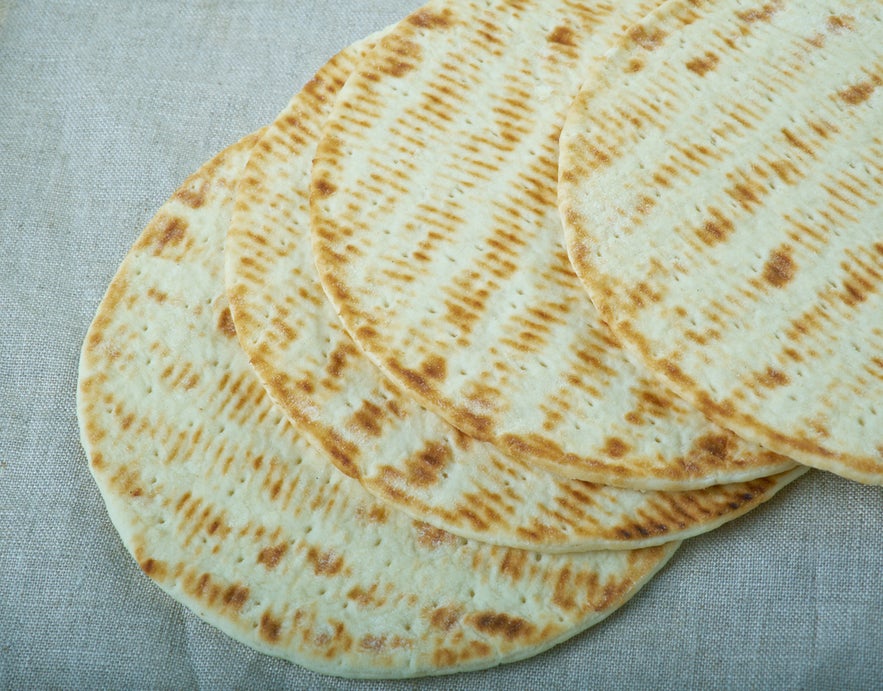 Even more basic is this unleavened take on Iceland’s signature rye bread.
Even more basic is this unleavened take on Iceland’s signature rye bread.
Ingredients:
-
2¼ pounds (1.02 kilograms) rye flour
-
Lukewarm water
Directions:
Add the rye flour to a large bowl, then gradually pour in the lukewarm water, kneading the mixture until it forms a dry dough. Shape into a ball, cover, and refrigerate overnight.
Portion out the dough into 10 pieces, then roll out each piece into a ¼-centimeter-thick circle. Prick the dough with a fork.
Fry each flatkaka in a pan on the stove on both sides.
This recipe is from Taste Atlas.
Desserts and Sweets
No meal is complete without a sweet note to end on. Here are some traditional Icelandic desserts to try.
Happy Marriage Cake (Hjonabandssaela)
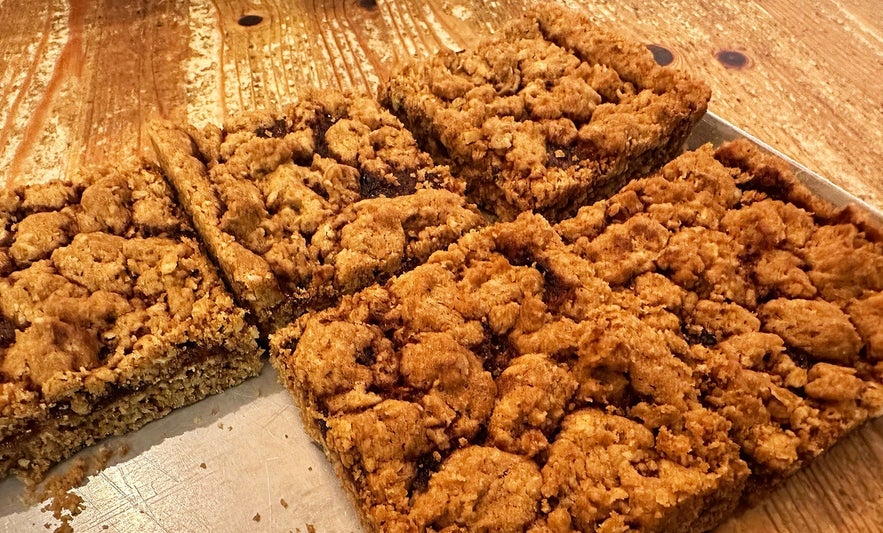
Ingredients:
For rhubarb compote:
-
1 pound (453 grams) fresh rhubarb, sliced into ½-inch (1.27 cm) thick pieces
-
¼ cup (50 grams) superfine/caster sugar
-
1 teaspoon (5 milliliters) vanilla extract
For cake crumb:
-
1½ cups (135 grams) rolled oats
-
1½ cups (180 grams) plain flour
-
½ cup (100 grams) superfine/caster sugar
-
¼ cup (55 grams) brown sugar
-
1 teaspoon (2 grams) ground cardamom
-
¾ teaspoon (3 grams) baking soda
-
8 ounces (227 grams) butter, softened and cubed
-
1 medium egg, room temperature
Directions:
Lightly greaseproof your cake tin and set aside. Place rhubarb, sugar, and vanilla extract in a medium saucepan over medium heat with a lid on. Stir intermittently to ensure it cooks evenly until the rhubarb is soft but still has some shape, approximately 15 minutes. Remove and set aside to cool fully.
Preheat your oven to 400°F (205°C). Place the oats into a blender or food processor and pulse to make the oats a little finer, but not completely fine like flour. Pour the oats, flour, sugars, ground cardamom, and baking soda into a medium bowl, stirring to combine.
Toss in the butter and cut into your mixture until it resembles a crumble mixture; it will be quite clumpy. Add the egg and combine on low with a mixer until the mixture resembles a wet crumble and no dry portions remain in the base of your bowl.
If you do not have access to fresh rhubarb, substitute rhubarb jam or mix it with strawberry jam.
Spoon two-thirds of the dough into your cake tin and press to cover the base and sides of the tin. Spoon the rhubarb compote over the crust and top with uneven clumps of the remaining crust. Place in the oven and bake until golden, approximately 25 minutes.
Remove and set aside to cool before removing from the tin. Slice and serve with a little whipped cream.
This recipe is from Roaming Taste.
Icelandic Twisted Donuts (Kleinur)

Ingredients:
-
5 cups (600 grams) all-purpose flour
-
1 stick (113 grams) cold butter, cut into small cubes
-
1 cup (200 grams) sugar
-
1½ teaspoons (6 grams) baking soda
-
2 teaspoons (4 grams) ground cardamom
-
6 teaspoons (24 grams) baking powder
-
2 cups (475 milliliters) plain yogurt
-
2 whole eggs
-
Vegetable oil for deep-frying
Directions:
Mix half of the flour and all of the butter in a food processor until the butter is incorporated, about half a minute, until you have a powdered consistency. Turn the mixture out onto a clean work surface. Add the other half of the flour, along with the sugar, baking soda, cardamom, and baking powder. Use your hands to blend until everything is well combined.
Make a well in the center of the flour mixture and drop the eggs and yogurt into it. Work the flour into the egg mixture until well combined, forming a firm dough that is not sticky but almost sticky. Add more flour or yogurt if necessary. Do not knead the dough too much, or the kleinur will become chewy.
Divide the dough into two equal parts. Cover and refrigerate for 30 minutes.
Take one-half of the dough and place it on a floured surface. Dust with a little flour, then roll it to about 20 x 14 inches (50 x 35.5 centimeters). Cut the dough into five long strips. Cut each strip into five equal diamonds. Save the scraps and add them to the stored dough.
Make a slit in the center of the diamond. Take one end and pull it through the center slit.
Heat about 3 inches (7.6 centimeters) of oil to 350°F (177°C) in a large pot and keep the temperature stable. Gently lower about five to six pieces at a time into the pot. The oil will always cool a little when you add new dough to it, so clip a thermometer to the pot to measure the temperature. Fry until one side is golden (about 1 minute), then turn them with a spatula and cook the other side for a little less than a minute.
When both sides are a beautiful golden brown, remove the kleinur from the oil and set aside on a paper towel to drain and cool.
Repeat this process with the other dough ball in the fridge.
This recipe is from All That Cooking.
Vinarterta (Icelandic Celebration Cake)
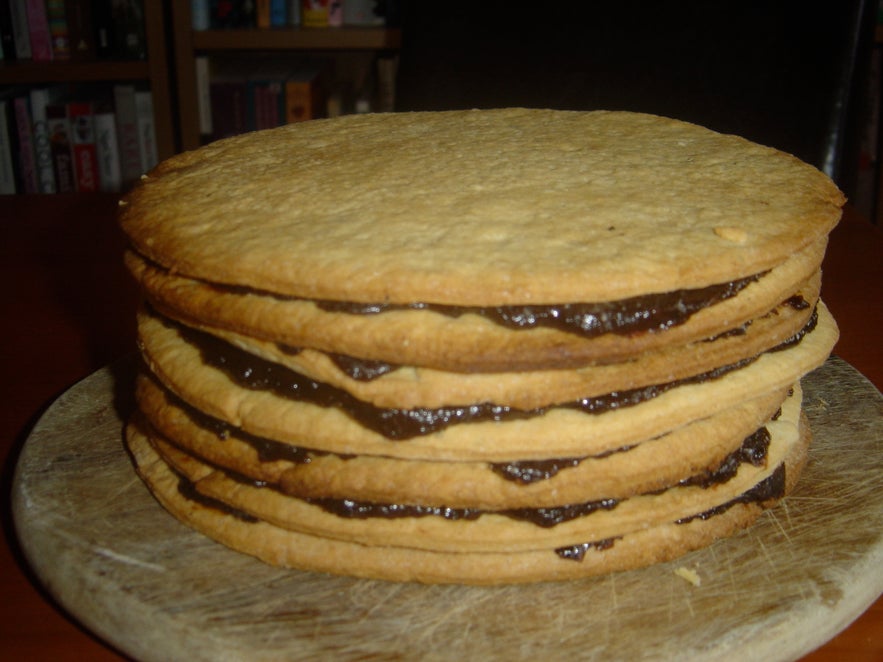
Photo from Wikimedia, Creative Commons, by Navaro. No edits made.
A multi-layered cake that first came into fashion in the 19th century, Vinarterta is served at holidays and special occasions.
Ingredients:
For cake:
-
4 cups (480 grams) all-purpose flour, plus more for the surface
-
2 teaspoons (8 grams) baking powder
-
½ teaspoon (2.5 grams) salt
-
8 ounces (227 grams) unsalted butter, softened
-
1 cup (200 grams) granulated sugar
-
2 large eggs
-
1 teaspoon (5 milliliters) pure vanilla extract
-
1 tablespoon plus 1 teaspoon (20 milliliters) whole milk
For filling:
-
2 pounds (907 grams) pitted prunes
-
2 cups (475 milliliters) water
-
1½ cups (300 grams) granulated sugar
-
1 teaspoon (5 milliliters) pure vanilla extract
-
¼ teaspoon (1.25 grams) salt
-
½ teaspoon (1 gram) ground cardamom
-
Confectioners' sugar, for dusting
Directions:
Whisk together flour, baking powder, and salt in a medium bowl. Beat butter and granulated sugar with a mixer on medium speed until pale and fluffy. With the machine running, add eggs, one at a time, mixing well after each addition. Mix in vanilla.
Reduce speed to low. Working in batches, add flour mixture to butter mixture, alternating once with milk, beginning and ending with flour. Mix until dough is smooth. Refrigerate for 30 minutes.
Combine prunes and water in a medium saucepan. Bring to a boil, reduce heat, and simmer until prunes are tender, about 15 minutes. Strain, reserving liquid. Coarsely chop prunes in a food processor, and return to saucepan with reserved liquid and the granulated sugar. Cook over medium heat until mixture is thick, about 15 minutes. Add vanilla, salt, and cardamom. Refrigerate until slightly firm, about 30 minutes.
Preheat the oven to 375°F (190°C). Turn out the dough onto a lightly floured surface. Divide it into seven equal pieces (about 6 ounces / 170 grams each). Roll each piece into a 10-inch (25 cm) round, and cut into a 9-inch (23 cm) circle using the bottom of a 9-inch (23 cm) cake pan as your guide. Place one dough circle on a baking sheet and bake until the edges are golden, about 14 minutes. Transfer to a wire rack and let cool. Repeat with the remaining six dough circles.
To assemble, spread about ¾ cup (180 milliliters) prune filling evenly onto one cake circle. Top with another circle, and continue until all seven layers have been assembled (do not put filling on the top layer). Wrap in plastic and let stand overnight.
Dust the cake with confectioners' sugar. Cut into quarters, then horizontally into ½-inch (1.25 cm)-thick slices.
This recipe is from Martha Stewart.
Icelandic Brownie Cake (Skuffukaka)
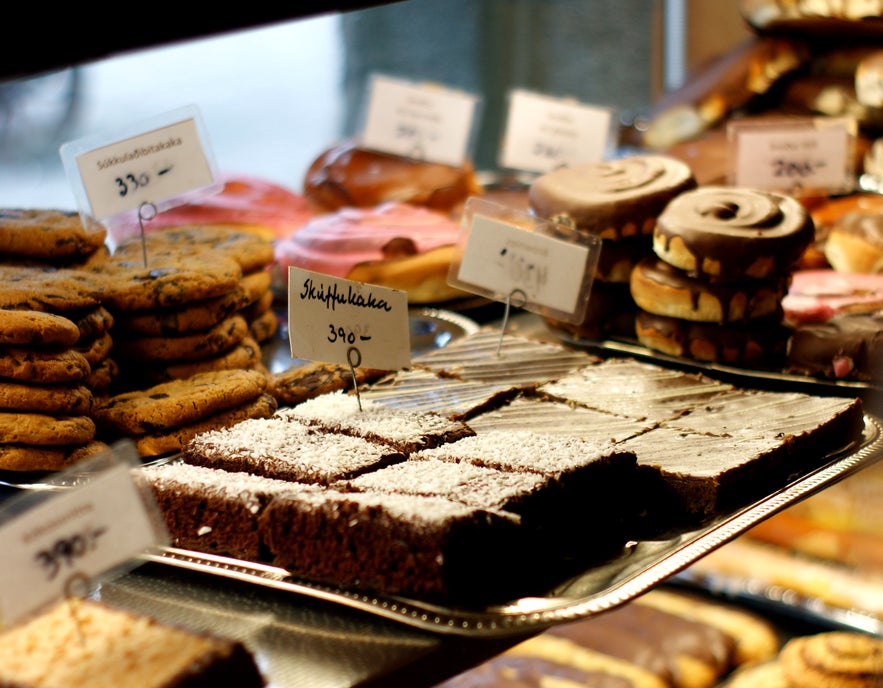 Their light, fluffy texture, along with coffee and coconut, sets these brownies apart from the boxed mix you’ll find in your grocery store.
Their light, fluffy texture, along with coffee and coconut, sets these brownies apart from the boxed mix you’ll find in your grocery store.
Ingredients:
For cake:
-
1½ cups (300 grams) sugar
-
¾ cup (170 grams) unsalted butter, melted
-
2 eggs, room temperature
-
2 cups (240 grams) flour
-
1 teaspoon (4 grams) baking soda
-
½ teaspoon (2 grams) baking powder
-
1 teaspoon (2.5 grams) cinnamon
-
1 teaspoon (5 grams) kosher salt
-
½ cup (50 grams) good-quality dark cocoa powder
-
⅔ cup (160 milliliters) cold coffee
-
¾ cup (180 grams) plain skyr
For frosting:
-
½ cup (113 grams) salted butter, very soft or melted and allowed to cool
-
⅓ cup (30 grams) cocoa powder
-
2½ cups (300 grams) powdered sugar
-
2–4 tablespoons (30–60 milliliters) milk
-
1 teaspoon (5 milliliters) vanilla extract
Directions:
Preheat the oven to 400°F (205°C). Grease a 9 x 13-inch (23 x 33 cm) pan. In a medium bowl, sift together flour, cocoa powder, cinnamon, baking powder, salt, and soda. Set aside.
In another bowl, beat sugar and butter together until well combined. Beat in eggs, one at a time, until thoroughly blended.
In a small bowl, whisk together the coffee and skyr. Add the dry ingredients and the skyr mixture to the butter mixture, alternately, beginning and ending with the dry ingredients. Beat on medium speed until blended, although a few small lumps may remain.
Pour batter into prepared pan and bake for 25 minutes, or until a wooden toothpick inserted into the center comes out clean. Cool completely.
For frosting, beat cocoa powder into butter. Add half of the powdered sugar and continue to beat. Add vanilla and 1–2 tablespoons (15–30 milliliters) milk. Beat thoroughly. Continue to add milk, a very small amount at a time, until the frosting reaches a fluffy, spreadable consistency. Frost the top of the cake. Sprinkle with dried coconut if desired.
This recipe is from Brambleberry Meadow.
Icelandic Cocoa Soup
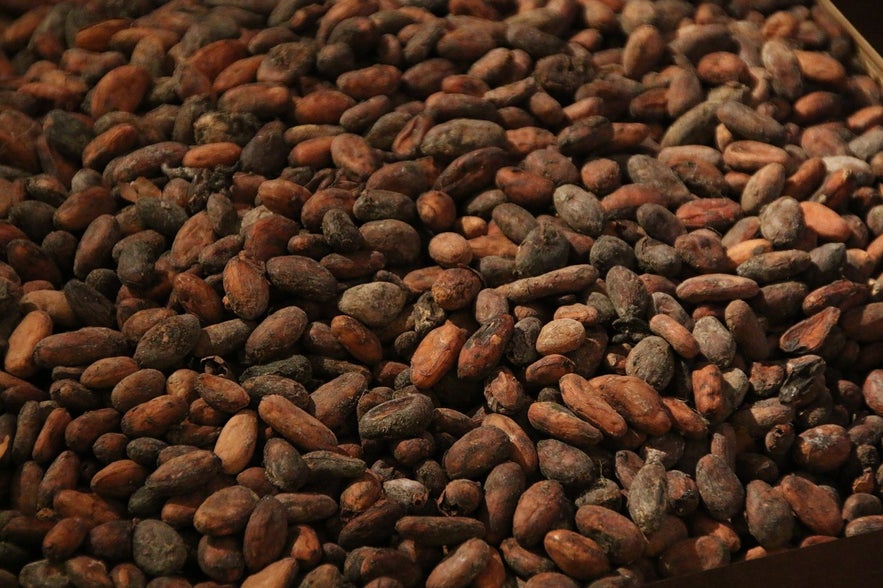
This Icelandic dessert is sometimes served as a main course and is a particular favorite with children, for obvious reasons.
Ingredients:
-
3 tablespoons (18 grams) cocoa powder
-
3 tablespoons (38 grams) sugar
-
½ teaspoon (1 gram) cinnamon
-
2 cups (475 milliliters) of water
-
3 cups (710 milliliters) of milk
-
1 tablespoon (8 grams) potato starch or cornstarch
-
Salt, to taste
Directions:
Mix the cocoa powder, sugar, and cinnamon in a saucepan. Gradually add the water and stir until smooth. Bring to a boil and simmer for 5 minutes. Add the milk, reheat to boiling point, and simmer for 2–3 minutes.
Mix the potato starch or cornstarch with a little cold water, stir into soup, and remove from heat. Salt to taste and serve.
Skyr Creme Brulee
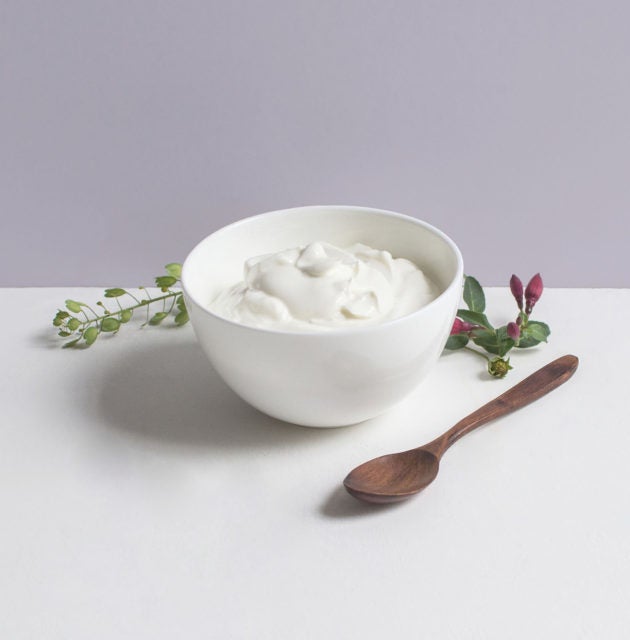
Skyr is thick and creamy Icelandic yogurt, similar to Greek-style yogurt. It’s an ingredient in many Icelandic desserts, including this twist on creme brulee.
Ingredients:
-
⅓ cup (80 milliliters) cream
-
⅓ cup (80 grams) pure skyr
-
1 egg yolk
-
4 tablespoons (50 grams) sugar
-
¼ cup (45 grams) white chocolate
-
The juice of ½ lime (about 1 tablespoon / 15 milliliters)
-
1 vanilla pod
-
Demerara sugar for sprinkling
Directions:
Split the vanilla pod lengthwise and put in a saucepan with the cream. Bring to a boil, remove from heat, and add the skyr.
Melt the chocolate in a double boiler and add to the warm skyr mixture.
Stir together the egg yolk and sugar and add to the skyr mixture along with the lime juice. Put into creme brulee ramekins and bake in a water bath at 250°F (120°C) for 30 minutes. Cool. Sprinkle with demerara sugar and melt the sugar with a creme brulee torch.
Frequently Asked Questions About Icelandic Recipes
 There’s always more to learn about Iceland’s culinary history.
There’s always more to learn about Iceland’s culinary history.
1. What are some of the most unusual Icelandic foods?
Because of the climate, methods of preserving meat and fish have traditionally been extremely important to Icelanders' diets. Some of these preserved and traditional dishes may be unfamiliar to visitors, but are worth a try to get a real feel for the country.
Consider trying the delicacy of hakarl, which is fermented shark; svid, which is boiled sheep’s head; or slatur, which is Iceland’s traditional blood pudding.
2. Can I try Icelandic recipes with ingredients from outside of Iceland?
Some Icelandic ingredients can be difficult to find outside of Iceland. (Though Skyr is an example of an ingredient that’s become globally popular.) However, substitutes such as cured meat, regular yogurt, and your favorite fish can help you re-create similar flavors at home.
3. Are there any vegetarian Icelandic recipes?
While traditional Icelandic cuisine is heavily focused on meat and fish, there are vegetarian options, such as hearty root vegetable stews, rye bread, and berry-based desserts.
Expanding Your Horizons With Icelandic Recipes
 Immersing yourself in the food scene is a great way to make your vacation even more memorable. You’ll surely take home an appreciation for Icelandic cuisine after sampling all the country has to offer. Even if you’ve never been, try some of these Icelandic recipes to get a feel for how Icelanders eat—every day, at celebrations, over the holidays, and more.
Immersing yourself in the food scene is a great way to make your vacation even more memorable. You’ll surely take home an appreciation for Icelandic cuisine after sampling all the country has to offer. Even if you’ve never been, try some of these Icelandic recipes to get a feel for how Icelanders eat—every day, at celebrations, over the holidays, and more.
What is your favorite Icelandic dish? Do you have a traditional recipe to share? If so, tell us about it in the comments.


